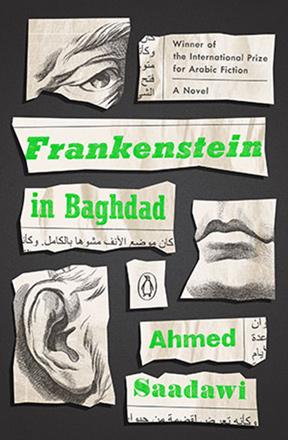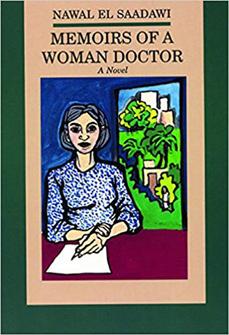You are here
The son of Baghdad who fathered Iraqi Frankenstein
By AFP - Sep 29,2016 - Last updated at Sep 29,2016

Iraqi writer, Ahmed Saadawi, poses with his book titled in French ‘Frankenstein a Bagdad’ (Frankenstein in Baghdad) on August 4, 2016 in the capital Baghdad (AFP photo)
BAGHDAD — When Ahmed Saadawi finished writing “Frankenstein in Baghdad”, a dark fantasy about the war that tore Iraq apart a decade ago, he thought his novel dealt with the past.
But just like the monster Mary Shelley first dreamt up exactly 200 years ago, Saadawi’s hero then took on a life of its own.
A fresh wave of violence in Iraq and the region has given renewed relevance to the novel, which was published in 2013, as the Arab Spring gave way to chaos and before a third of Saadawi’s native Iraq fell to ultra-violent jihadists.
Saadawi won the International Prize for Arabic Fiction in 2014 and became one of the new stars of the regional literary world.
“Frankenstein in Baghdad” was released in Italian earlier this year, a French translation hit bookshops this month and the English is due early next year.
In the novel, Hadi Al Attag, a rag-and-bone man from the old Baghdad neighbourhood of Bataween, sews together body parts scattered by bombings to form a full body.
A displaced soul then enters the figure. Hadi calls it the “shesma” — Iraqi dialect that translates as “whatsitsname”.
The creature starts killing, first to avenge bombing victims but then more randomly to get fresh parts to replace its own decomposing flesh.
‘The shesma is us’
“The shesma is not an imaginary fantasy creature, the shesma is us,” Saadawi told AFP.
“He thinks he is doing something good but he is participating in killing and destruction,” he said. “All of us have done this in one way or another, by welcoming, endorsing or not objecting to crimes.”
The story begins in the spring of 2005 and ends a year later on the eve of the 2006 bomb attack on a Shiite shrine in the city of Samarra that ignited two years of sectarian-driven bloodletting.
Saadawi’s book — which includes earthy and often hilarious descriptions of Bataween, a once beautiful Jewish neighbourhood now best known for prostitution and crime — has been something of a phenomenon on the Iraq literary scene.
The author, a genial character with salt-and-pepper stubble and a soaring forehead framing sparkling bespectacled eyes, is easily found at one of his favourite cafes and very accessible.
“Some friends have removed me from Facebook, some have made me a god, others sent me pictures of themselves burning my book,” Saadawi said, waving a copy of “Frankenstein in Baghdad”.
The 43-year-old doesn’t seem to entirely dislike the attention.
Saadawi, who is from a family with no artistic pedigree and grew up in the humble neighbourhood of Sadr City, learned to read and write by accompanying his mother to literacy classes.
Hollywood deal in offering
“That got me writing earlier than other kids... By the time I was seven, I was writing many stories about animals,” he said.
“I would read them to my friends and they would listen to me, it made me feel famous. So at that time I already had this idea that fiction was part of real life.”
Publishing giant Penguin is releasing “Frankenstein” in the United States soon and a deal for a Hollywood adaptation is in the works.
But being a novelist in Baghdad, even a successful one, does not pay the rent and Saadawi works as a journalist and documentary maker to make ends meet and finance the next novel.
Shelley invented Frankenstein during a holiday spent trapped indoors in 1816, which became known as “the year without a summer” because the ash from the eruption in Indonesia of Mount Tambora plunged much of the world into a long volcanic winter.
Saadawi, however, bases his writing on a thorough knowledge of the street, its people and the Baghdadi slang they speak that shows at every turn of the page.
“Not every novelist is [Ernest] Hemingway, with extremely diverse life experiences,” he said of the American author he cites as a major influence.
“The novelist should have the journalist’s aptitude to look for stories first, venture into reality to capture details,” he said.
Inspired by grim reality
The idea for his book is rooted in what has been Iraq’s grim reality for years.
Saadawi recounted two specific incidents that shocked him and inspired him to write “Frankenstein in Baghdad”.
One was in the city of Baquba when Al Qaeda in Iraq, the previous incarnation of what is now the Daesh group, kidnapped a man, killed him and chopped his body into pieces.
“They dropped each piece in a different part of Baquba... When the city woke up, each neighbourhood saw a different body part.
“They made the whole city see the body simultaneously,” he said. “What criminal genius!”
The other moment that stuck with him was also at the height of the civil war that raged a decade ago when hospitals were overwhelmed by the sheer volume of bodies being brought in after bombings.
The fridges were overflowing and bodies simply lined up in corridors. Saadawi told of how one exhausted forensic team “lost their humanity”.
“One day someone came asking about his brother... they told him that all the bodies had already been collected by their families, except for these pieces,” he said.
“There were mismatched, unclaimed... body parts and they told him to assemble a man from them and take it away.”
Related Articles
Frankenstein in BaghdadAhmed SaadawiTranslated by Jonathan WrightNew York: Penguin Books, 2018Pp.
Memoirs of a Woman DoctorNawal El SaadawiTranslated by Catherine CobhamLondon: Saqi Books, 2019Pp.
BAQUBA, Iraq — Three explosions, two of them suicide bombings, killed at least 33 people near Baquba, the capital of Iraq's restive eastern

















